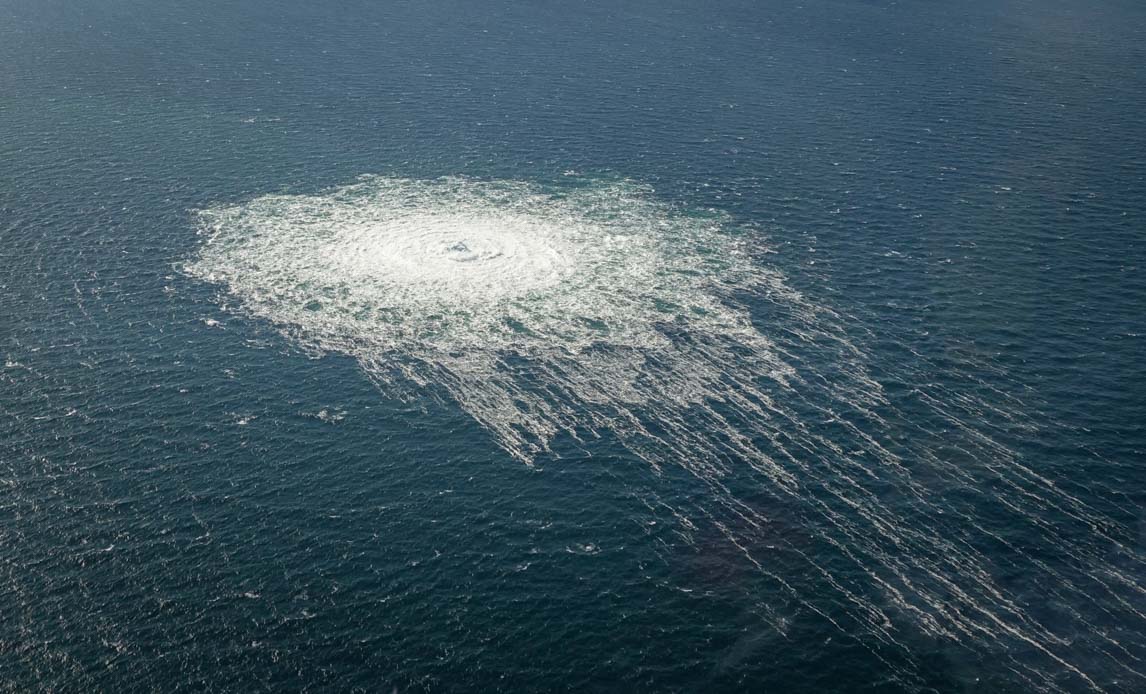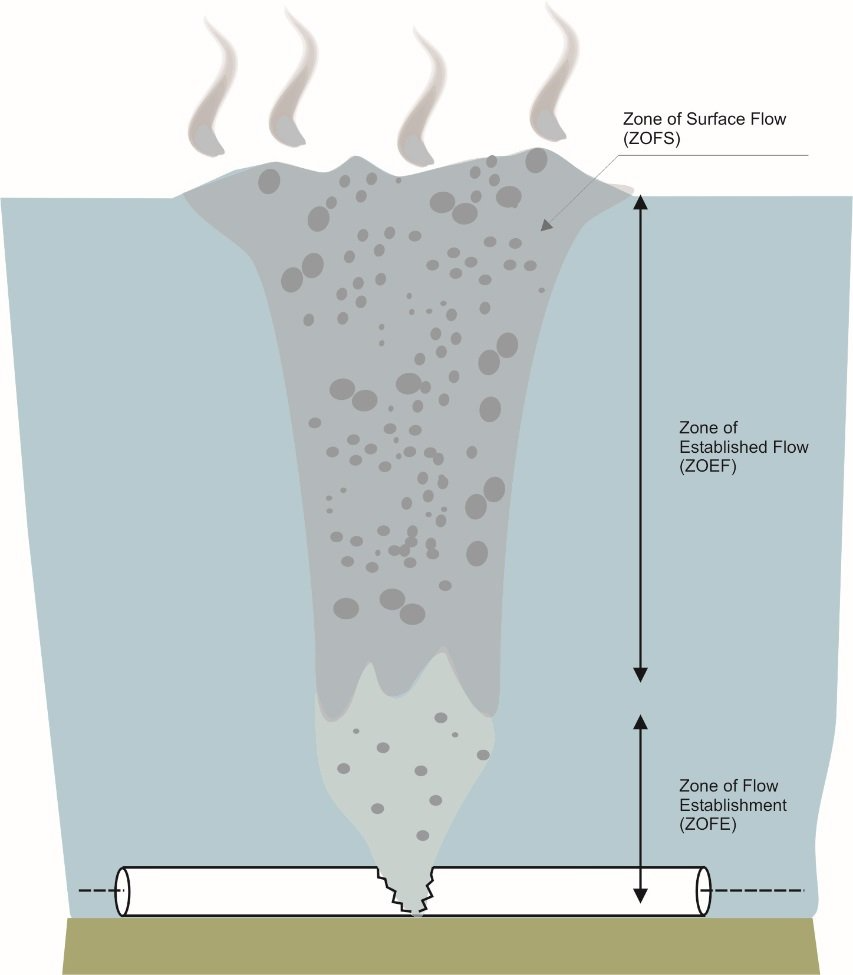CCB position on gas leaks from Nord Stream 1 and 2

The gas leak at Nord Stream 2 seen from the Danish F-16 interceptor on Bornholm. Photo: Danish Defence
Coalition Clean Baltic expresses serious concerns regarding factual massive release of greenhouse gas and other possible environmental consequences of the natural gas leakages that were detected by Danish and Swedish authorities from the Nord Stream 1 and 2 pipelines on 27-28 September 2022.
With the information available at this point and risk assessment from EIA Reports of both pipelines, presented under the Espoo Convention consultations, the full volume of gas, being contained in the damaged pipelines may be released into marine environment and atmosphere.
In the worst case scenario, given pipeline dimensions in the project description (internal diameter 1,153 mm, length 1,220 km) the volume of one pipeline can be calculated as 1.27 million m3. At the settle out pressure of 165 bar, there will be the equivalent of 210 million m3 (at atmospheric pressure) or around 148,000 tons of gas in one enclosed pipeline. According to the EIA, the consequent environmental impacts can occur following the release of gas:
- Emission of greenhouse gases to the atmosphere:
Methane, equivalent to the release of 3.7 million tons of CO2 in terms of climate change potential - Impacts on water quality:
Natural gas exhibits negligible solubility in water, and thus has little effect on water quality in the event of an underwater leak. The gas will rise to the water surface, from where it will be released into the atmosphere; the extent to which it dissipates depends on meteorological conditions and the weight of the gas in relation to the surrounding air. A short thermal impact (temperature drop to negative value caused by gas expansion, or Joule Thomson effect) may occur in the surrounding water. Another possible impact on water quality from an accidental pipeline rupture and gas release is a possible updraft of bottom water. This could cause bottom water to be mixed with surface water, with an impact on salinity, temperature and oxygen conditions. - Impacts on fish, marine mammals and birds:
All marine organisms (benthic fauna, fish, marine mammals and birds) within the gas plume or the subsequent gas cloud will die or flee from the influenced area, which subsequently could impact the designation basis of protected areas (including Natura 2000 sites). The impact will be of limited time and space.

Besides the expert assessment of higher than estimated in EIA climate impacts (up to 14.3 million tons of CO2-equivalent over a 100-year timeframe), the identified leaks are located in or near the only cod spawning area we have in the Eastern Baltic Sea. Hence the event can cause considerable harm/mortality to the young fish recently born in the area, as well as physical and physiological damage (incl. gas bubble disease), spatial disturbance, etc. To monitor the environmental consequences of this unprecedented situation, all EU Member States being HELCOM Contracting Parties in the area should swiftly deploy instruments to measure the status in relation to e.g. salinity, oxygen and pH. Such equipment could be placed around the perimeter of the incident areas to measure if methane leak has further away effects.

Model prepared by Sabine Eckhardt, NILU.
We also herewith inquire that a transparent information process should be established by respective EU Member States being HELCOM Contracting Parties to keep the public aware of environmental impacts of the accident and their implications for future environmental efforts as well as their consequences on climate and health of the Baltic Sea. Respective HELCOM subsidiary bodies, i.e. STATE & CONSERVATION, RESPONSE and PRESSURE should be involved.
NOTES
- Full letter sent to HELCOM on 29 September 2022
- Media release: ICOS measurements show huge methane peaks in the atmosphere after Nord Stream leak (30 September 2022)
- Danish Energystyrelsen PR (28 September 2022)
- Reuters' article (26 September 2022)
- CCB Save Kurgalskiy campaign: https://www.ccb.se/save-kurgalskiy
- Espoo Report on Nord Stream 2 ( April 2017)
- Environmental Study: Pipeline System on the Swedish Continental Shelf Nord Stream AG – (October 2008)

